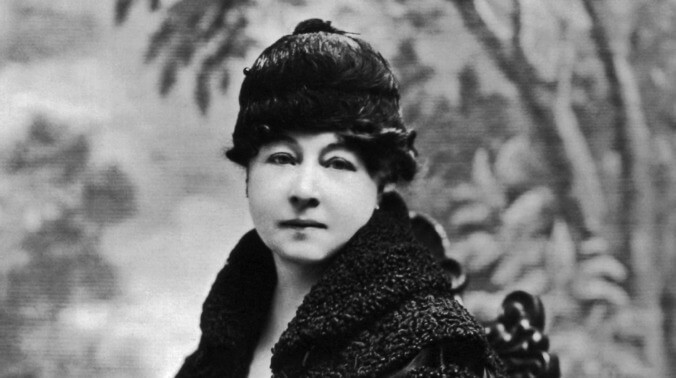Instead, the company was named for Eiffel’s young partner, Leon Gaumont. Gaumont and Guy-Blaché were both in the audience when brothers Auguste and Louis Lumière screened one of the first motion pictures, Workers Leaving The Lumière Factory. Gaumont was excited enough to expand his company into the burgeoning movie industry, but Guy-Blaché wasn’t impressed. She thought she could do better, using film to tell stories instead of simply capturing scenes of everyday life.
In 1896, she directed what is likely the first narrative film, La Fée Aux Choux (The Cabbage Fairy), a fairy-tale-like story about babies born in a cabbage patch. Film historians have discovered both 1900 and 1902 prints of the film, but neither match Guy-Blaché’s descriptions of her 1896 version (which was confirmed by a newspaper review from the time).
Strangest fact: Being the only female director may not have been a big deal in a world with only a handful of directors. Following the making of La Fée Aux Choux, Gaumont put Guy-Blaché in charge of production, and she continued to make narrative films alongside the dance performances and travelogues the Lumières and Thomas Edison were also releasing. For 10 years, she was likely the only woman directing movies, and her career with Gaumont peaked with 1906’s big-budget The Life Of Christ, which featured 300 extras.
Thing we were happiest to learn: Guy-Blaché went Hollywood, back when Hollywood was in New Jersey. In 1907, she married Herbert Blaché, who soon became Gaumont’s U.S. production manager. After a few years in America, the two and a partner started their own studio, Solax. They set up shop in Flushing, Queens, and within two years made enough money to build a high-tech $100,000 studio in Fort Lee, New Jersey, where many film studios were based at the time. The couple made one to three films a week, with Alice as writer-director and Herbert as cinematographer.
Thing we were unhappiest to learn: Guy-Blaché’s story was largely forgotten. After several years of making movies together, Herbert Blaché left Alice and their two kids in 1918 to make movies in Hollywood. The following year, Alice nearly died from Spanish flu while filming Tarnished Reputations, which would be her final film. She followed Herbert to California in 1919, but they remained separated and only worked together, with her as his assistant director. For reasons Wikipedia doesn’t explain, their studio went bankrupt in 1921. The following year, the Blachés divorced, and Alice moved back to France, never to make another film.
She was largely forgotten by the movie world. Even when she was given the Légion d’honneur in 1953, and recognized by Cinématheque Française in 1957, the press took little notice. The autobiography she wrote in the late ’40s wasn’t published until 1976. In it, she bemoaned the fact that she had been virtually erased from the film industry’s history. Sadly, like much of the silent era, Guy-Blaché’s work has been largely lost to history. Only 150 of her films survive, 22 of them feature length.
Also noteworthy: Guy-Blaché was a pioneer on several fronts. While with Gaumont, she experimented with syncing sound to picture, and used some of the first special effects, including double exposure, masking, and running a film backwards. In her New Jersey studio, she made A Fool And His Money, a 1912 comedy believed to be the first movie with an all-Black cast.
Best link to elsewhere on Wikipedia: While he only played a small role in the film industry, Gustave Eiffel was a towering figure (no pun intended) in the field of civil engineering. Eiffel began his career designing railroad bridges in France, using innovative techniques to build engineering marvels. His reputation grew until he was invited to engineer the Statue of Liberty and the Astronomical Observatory in Nice, before building the tower that bears his name.
Further down the Wormhole: Guy-Blaché got some late recognition in 1995 documentary The Lost Garden, produced by the National Film Board Of Canada. Since 1939, that organization has produced over 3,000 films, for which it was given an honorary Oscar in 1988. The NFBC shares that honor with Leopold Stokowski, longtime conductor of the Philadelphia Orchestra, best known to the movie world for conducting the music for Fantasia. Stokowski even appears on-screen, shaking hands with Mickey Mouse. Walt Disney World has a statue commemorating the moment, and a pair of Fantasia-themed miniature golf courses called Fantasia Gardens. While there are few things that sound as wholesome as a miniature golf course at Disney World, in 2018, a dead body was found inside a burning car near Fantasia Gardens. That ugly event is just one on a list of incidents at Walt Disney World, which we’ll peruse next week.


 Keep scrolling for more great stories from A.V. Club.
Keep scrolling for more great stories from A.V. Club.